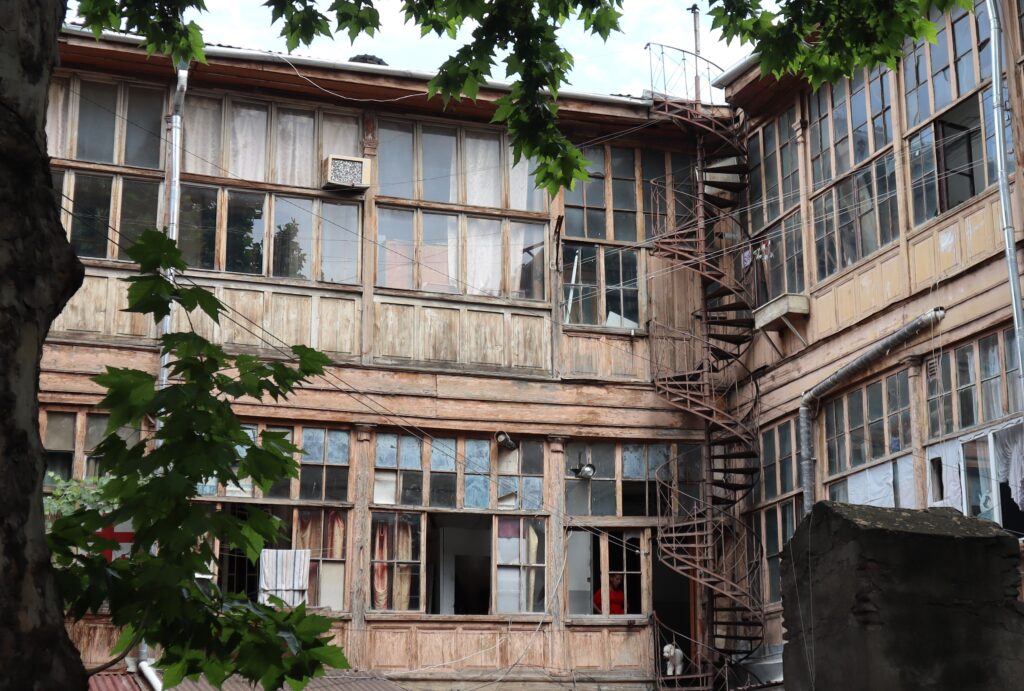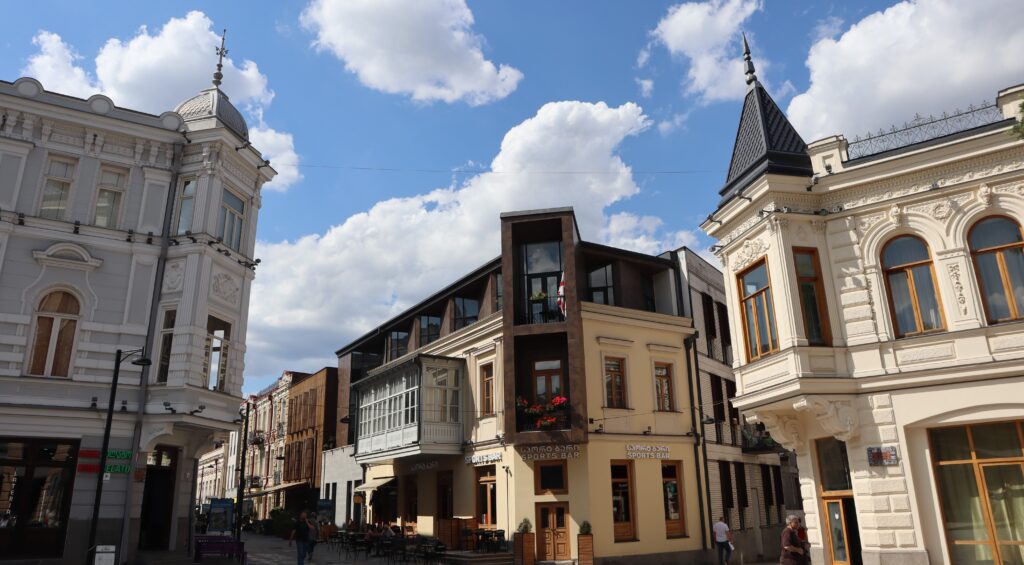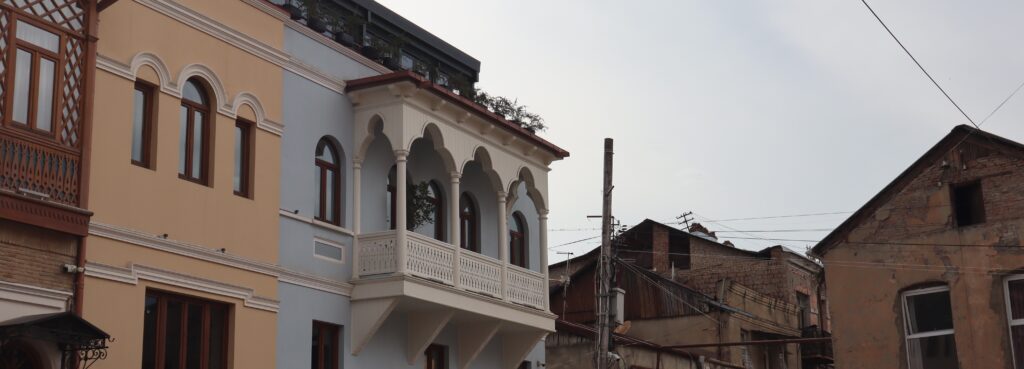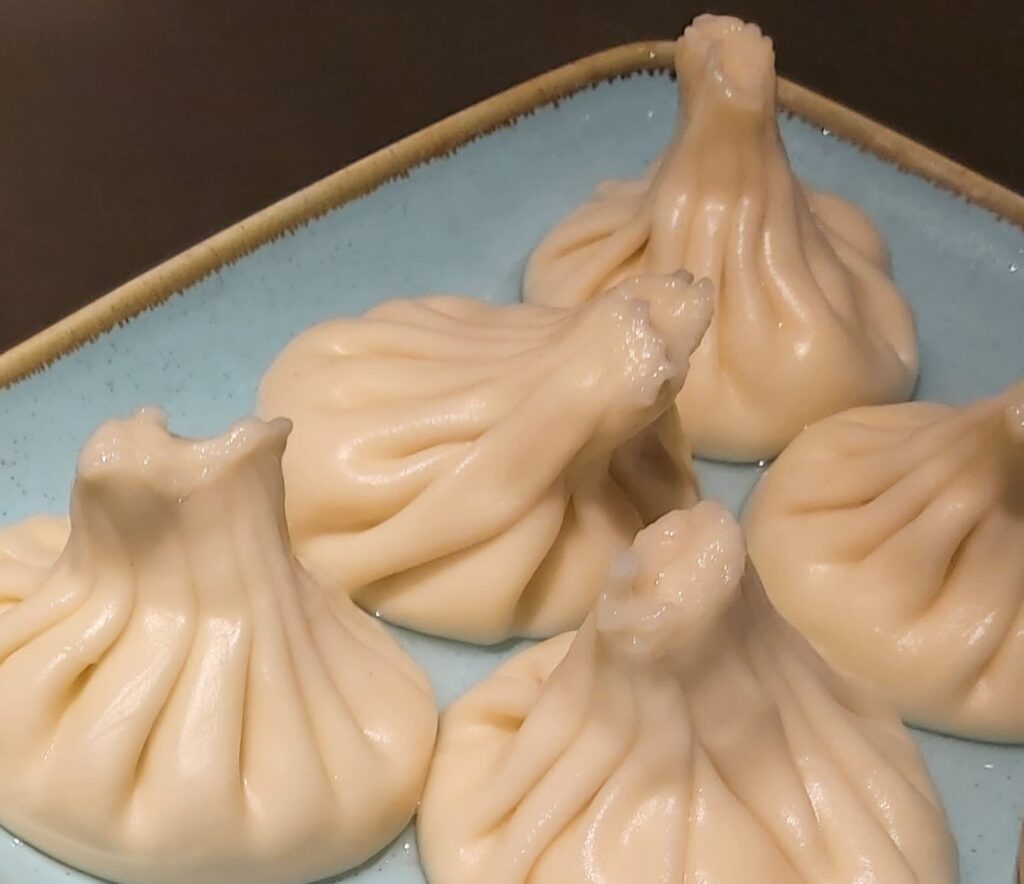
Everyone told me to visit Georgia, so I did. Unfortunately, I was a bit too late. Inflation, and the influx of young Russians, has gobbled up all the great bargains. It’s not that Georgia has become expensive, but that it is no longer silly cheap.
Georgia has a long, and varied, history. So long, that even the name is confusing. There are at two main theories about the origin of the name “Georgia”, either from a Greek word for farming or a Persian word for wolf. I read that Georgians call themselves “Kartvelebi”, which is neither Greek nor Persian.
The language is equally as mysterious. According to the internet (AKA, the Canadian Association of Second Language Teachers), “Georgian is the most widely spoken language in the Kartvelian language family (also known as South Caucasian or Iberian languages). Other languages in this family include Svan, Zan, and Laz.”
Sure. That helps.
Here’s an example of the language:
მარცხენა ფეხზე ადგომა
As I’m sure you know, it refers to someone who is moody or actually having a really bad day (translates as “standing on the left leg” or “wake up on the left leg”). Hmm, sounds a lot like “got up on the wrong side of the bed.”
Oh, and get this, the word გვწვრთნი starts with seven consonants.

As for its history, Tbilisi was founded in mid-5th century and immediately conquered and/or destroyed by the Persians, the Byzantines, the Arabs…regained by the Georgians…the Mongals, the Timur, the Turks, the Persians, again, and in 1801, the Russians. Finally, the Georgians again in 1991. I guess that’s what happens to a small country sitting right on a major trading route.

The capital city of Tbilisi is an interesting mix of new and old. I prefer the old. The old buildings all seem to have been cobbled together in order to make them interesting. Very few old buildings are simple boxes. They all have odd angles and seem to have enclosed their balconies over the years.
Many of the buildings look like they are moments away from collapsing. That’s probably because of the enclosed balconies; so broken glass and missing siding don’t matter.
When the old buildings are renovated, they are gorgeous. The new construction looks soulless by comparison.

Many Georgians openly hold strong anti-Russian feelings. You’ll see it in graffiti and even signs posted by businesses. For example, one place has a sign simply stating (in English) that they don’t speak Russian (a not-so-subtle hint), and another place displays a sign saying you are welcome if you believe Putin is a war criminal (not even a not-so-subtle hint that someone typed up and printed out). These sentiments certainly have been exacerbated by the recent influx of young Russian men.

Thirsty? Georgia is wine country and has been for around 8,000 years. The wines tend toward the sweeter side, with even dry reds being only moderately dry. Craft breweries and beer bars pour a variety of beers, including stouts to IPAs, but they are the exception and not the rule. Mainstream beers are light lagers or wheat beers, so don’t expect a lot of choices at a restaurant. If you are disappointed, don’t be. You will also have your choice of hard liquors, a dizzying variety of flavored whatnots (at about 30% ABV), and, of course, Chacha, a Georgian brandy much like Italian Grappa.
Using the standard unit of economics, the beer, it costs anywhere from $2.50 for a local, to $4 for a local craft, and $9 for a badly poured pint of Guiness. A good glass of wine in a nice restaurant, costs between $5 and $10. A shot of Chacha will set you back about $2.

One amateur Chacha maker said it is always to be drunk straight, so none of those silly cocktails for him. He also had a firm rule that you can have only 3 shots. His homemade Chacha is 70% ABV. Good to know. Commercial Chacha is probably a watered-down 40% ABV, and is the go-to after dinner drink in Georgia. The internet claims that it is due to Chacha’s “digestive powers and invigorating burn”. Whether homemade or commercial, I can assure you there is wisdom in the 3-shot rule.
Hungry? Perhaps the most famous dish in Georgia is Khinkali, a dumpling made by wrapping a meat or vegetable mixture in dough to make a sort pouch. The top of the pouch, where the dough is gathered up, makes a perfect handle. Just pick it up and munch away, being careful not to drip juices on yourself. Not up for the challenge? I did see one woman use a fork, but, uh, you know.
Hungry and thirsty? Swig some Chacha, bite the Khinkali & slurp its juices, contemplate your life choices, repeat. Typically, Khinkali are served in portions of 5. Good luck.
